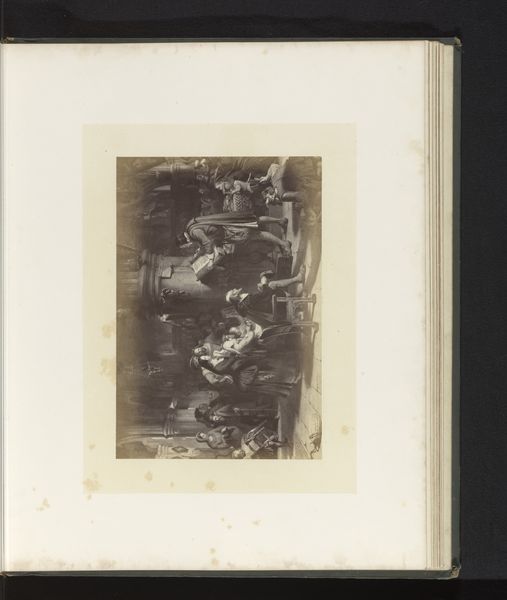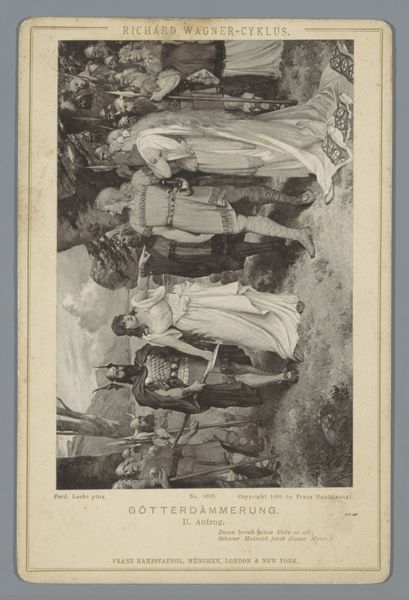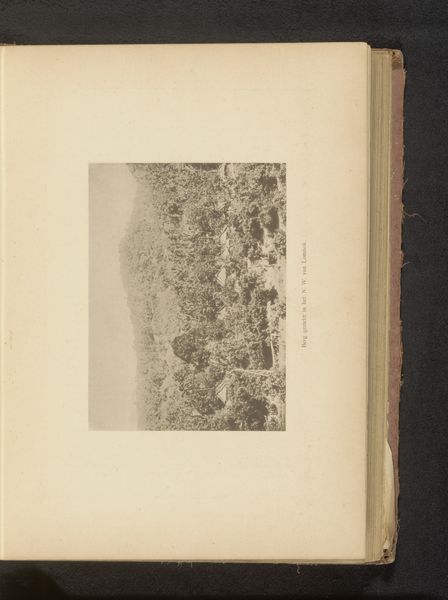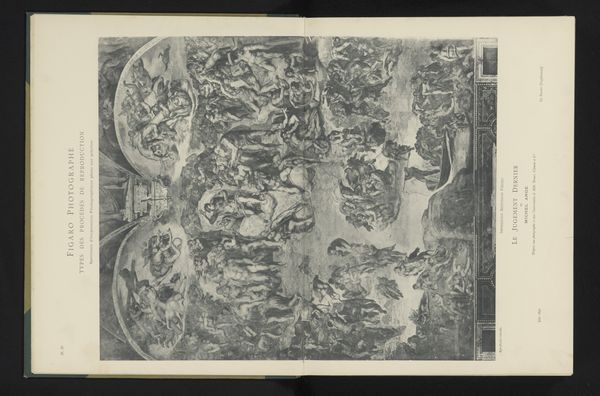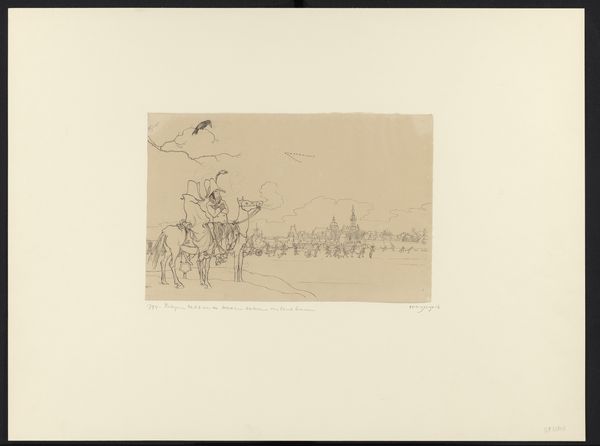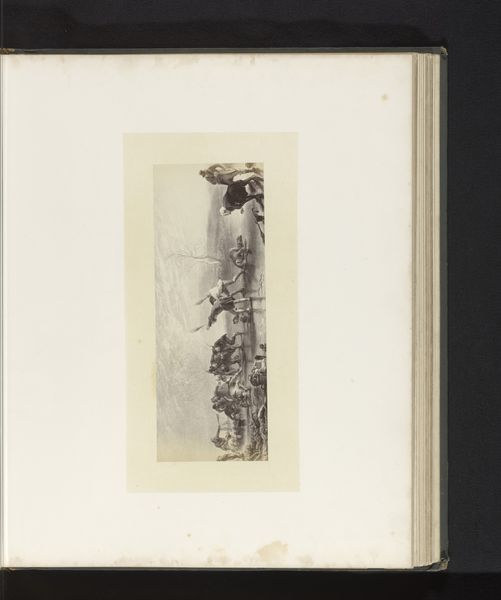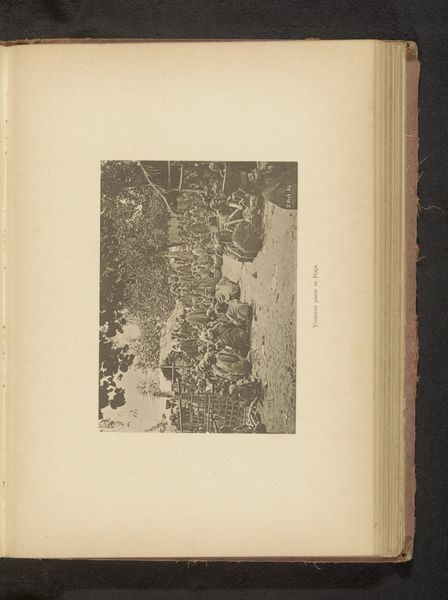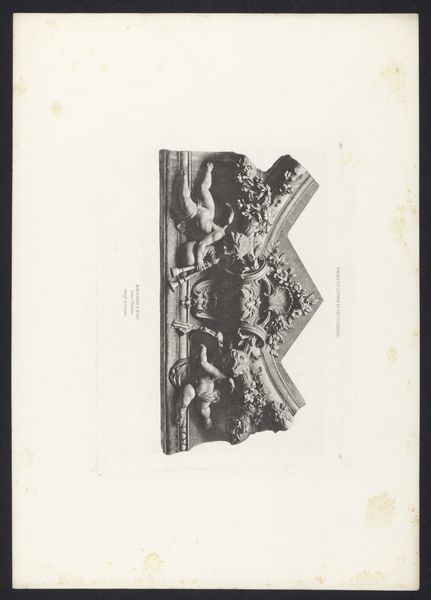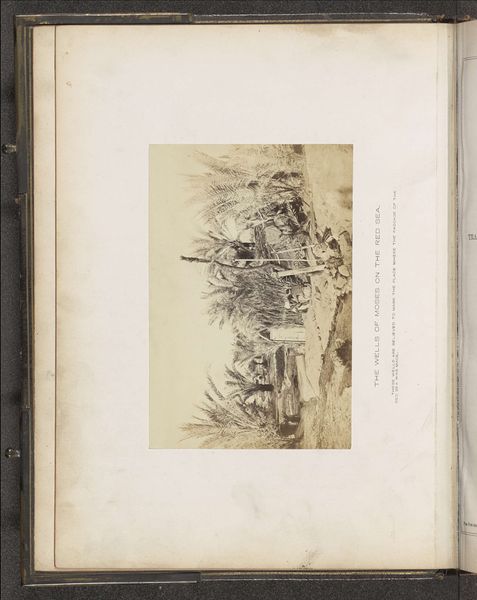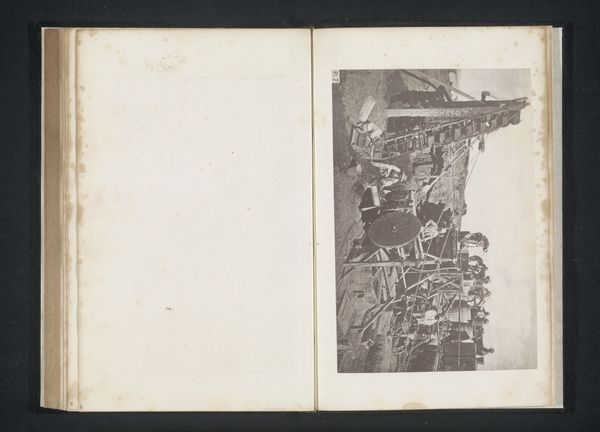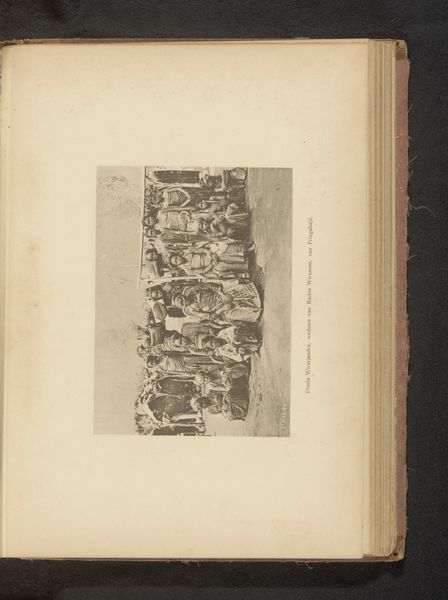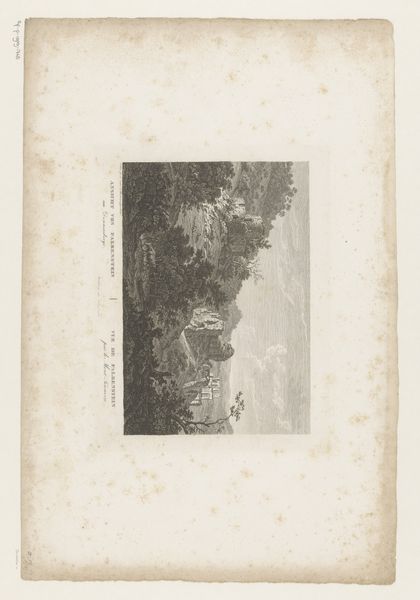
Fotoreproductie van een prent of tekening van de slag bij Solferino 1859
0:00
0:00
Dimensions: height 61 mm, width 105 mm
Copyright: Rijks Museum: Open Domain
Curator: The piece before us is a photographic reproduction of an earlier print or drawing. Its subject? The Battle of Solferino, dating back to 1859. It is attributed to Adolphe Alexandre Martin. Editor: It’s a vortex of bodies. A chaotic scramble etched in monochrome. The emotional atmosphere practically screams panic and desperation. It feels like gazing into the eye of a storm of human suffering. Curator: The Battle of Solferino was, of course, a pivotal moment. Witnessing the horrific aftermath led Henry Dunant to found the Red Cross. Its imagery – deeply embedded in cultural memory - highlights the inadequacies of 19th century European nation-state expansion. It begs the question: what exactly were those soldiers fighting for? And at whose expense? Editor: You’re right, the sheer density of figures, rendered almost as a single mass, evokes a loss of individual identity within the broader theater of war. The indistinct forms become symbolic of the countless anonymous victims claimed by these conflicts. Is it possible that this chaos is, in and of itself, a message? A comment on the futility and undifferentiated loss inherent in war? Curator: Perhaps the lack of clarity speaks to how power structures obscure the true costs of war. The elite, untouched by direct conflict, often fail to grasp the implications of their decisions on the lower classes and racialized others used as foot soldiers in the battlefield. Editor: I'm also struck by the absence of any heroic central figure. It refuses to romanticize war, presenting a jumbled landscape of potential annihilation and pain instead. It resists visual tropes and grand historical narrative paintings from this time. Curator: Absolutely. The photograph offers us a valuable lens to analyze intersectional power dynamics at play in mid-19th century Europe. Who gets remembered? Who is conveniently forgotten? These are urgent questions we can still ask today. Editor: Yes. Gazing upon the vortex, what stands out is its enduring resonance as a stark reminder of the universal costs of conflict and how deeply enmeshed visual symbols are within history and cultural identity.
Comments
No comments
Be the first to comment and join the conversation on the ultimate creative platform.
